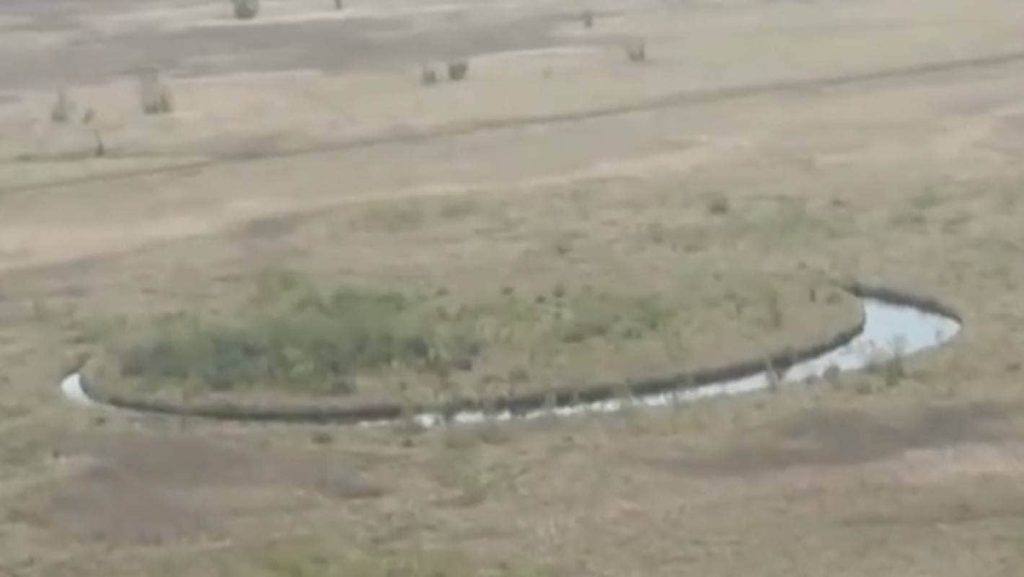There’s an unusually round island in Argentina called “El Ojo” or “The Eye,” and many theorists believe the place is supernatural. After all, it’s a geometrically-perfect island that floats in a patch of swampland, so naturally, alien theories surround it. A team called the El Ojo project has conducted limited research on the area and made startling discoveries about the island. However, what caused it is still a mystery.
El Ojo: The Circular, Rotating Island in Argentina
“The Eye” is located in the marshy landscape in the Parana Delta in Argentina. It seems to float in a small channel surrounded by water that is cold, clear, and atypical for the area. The strange island is 387 feet (118 meters) in diameter and scientists say it has existed since 2003. The earth on it seems firm, also atypical of the soft swampy marshes around it. Researchers noticed that the island seems to rotate while leaning on alternating sides of the circle’s wall.

With its seemingly unnatural shape, movement, and terrain, El Ojo is a mystery that many people want to solve. A team of filmmakers, including Sergio Neuspiller, found the island during pre-production for a horror film based on real stories about aliens, ghosts, UFOS, and other paranormal phenomena. Some parts of the story occurred around the Parana River and the team noticed the island while looking up locations on Google Earth. Anyone can search up El Ojo the same way, using the coordinates 34°15’07.8″S, 58°49’47.4″W.
Led by Neuspiller, the El Ojo project includes a team of filmmakers — including those who originally found the island — and researchers. They opened a Kickstarter to fund their expedition to the island, hoping to uncover and document its secrets, with intensive scientific and supernatural research. However, they only reached $9,698 of their $50,000 goal and Kickstarter labeled the campaign unsuccessful as of October 10, 2016. But anyone can watch the movement of El Ojo on Google Earth by looking up its coordinates and using the time slidertool. The island seems to be visible only after 2003. [1]
Questions and Theories
“The place was amazing and extremely strange. We discovered that the water is incredibly clear and cold, something totally unusual in the area. The bottom is hard, in contrast to the swampy marshes surrounding it,” Neuspiller said. “The center parts floats. We don’t know over what, but it floats.”
“This business of The Eye is very, very intriguing,” said Pablo Suarez, a researcher at Boston University and part of the El Ojo project. “Basically, we have an external perimeter that is constant in time, and it’s almost circular, in a flood plain … where things normally change and are muddy.” [2]
Despite the failed expedition, there are many other researchers interested in “The Eye.” For instance, Daniel Roy Finkley notes the similarity between El Ojo and many other formations near the Argentina coastline. Plus, it resembles the floating and rotating ice disk found in the Presumpscot River in Maine during the 2019 winter. Apparently, ice disks are fairly common under the right conditions. The perfect roundness of the ice disks forms as water flows rotate the ice, which shears against other pieces of ice, eventually eroding it into a symmetrical circle.
The formation of the ice disks could translate into the formation of El Ojo as well. Meaning it’s possible that a slow water current flows under one side of the island, causing it to rotate, which erods the edges of the island, shaping it into a circle while also carving a circular hole around it. But unlike ice disks, floating islands with plant life are rare, so there is much to learn about this phenomenon. [3]